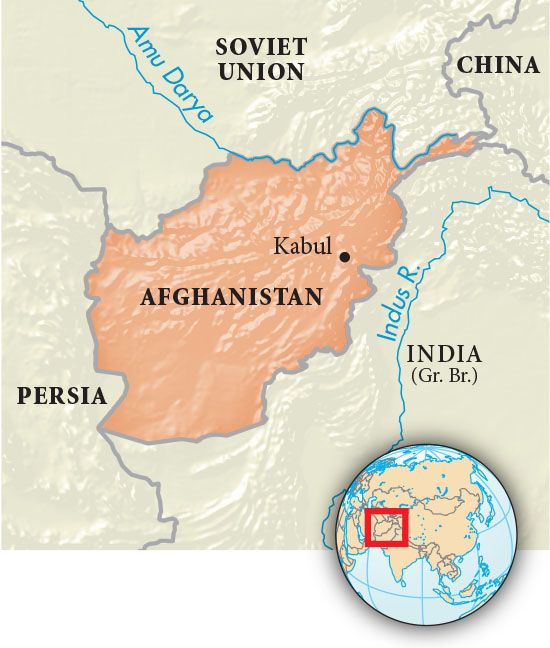A History of World Societies:
Printed Page 895
A History of World Societies Value
Edition: Printed Page 906
Modernization Efforts in Persia and Afghanistan
In Persia (renamed Iran in 1935) strong-
Yet the 1906 Persian revolution was doomed to failure, largely because of European imperialism. Without consulting Iran, Britain and Russia in 1907 divided the country into spheres of influence. Britain’s sphere ran along the Persian Gulf; the Russian sphere encompassed the whole northern half of Persia (see Map 29.1). Thereafter Russia intervened constantly. It blocked reforms, occupied cities, and completely dominated the country by 1912. When Russian power collapsed in the Bolshevik Revolution, British armies rushed into the power vacuum. By bribing corrupt Persians, Great Britain in 1919 negotiated a treaty allowing the installation of British “advisers” in every government department.
The Majlis refused to ratify the treaty, and the blatant attempt to make Persia a British satellite aroused the national spirit. In 1921 reaction against the British brought to power a military dictator, Reza Shah Pahlavi (1877–
Inspired by Turkey’s Mustafa Kemal, the patriotic, religiously indifferent Reza Shah had three basic goals: to build a modern nation, to free Persia from foreign domination, and to rule with an iron fist. The challenge was enormous. Persia was a vast, undeveloped country of deserts, mountain barriers, and rudimentary communications. The rural population was mostly poor and illiterate, and among the Persian majority were sizable ethnic minorities with their own aspirations. Furthermore, Iran’s powerful religious leaders hated Western (Christian) domination but were equally opposed to a more secular, less Islamic society.
To realize his vision of a strong Persia, the energetic shah created a modern army, built railroads, and encouraged commerce. He won control over ethnic minorities such as the Kurds in the north and Arab tribesmen on the Iraqi border. He reduced the privileges granted to foreigners and raised taxes on the powerful Anglo-
Because the European-

Afghanistan, meanwhile, was nominally independent in the nineteenth century, but the British imposed political restrictions and constantly meddled in the country’s affairs. In 1919 the violently anti-
Amanullah’s efforts to modernize Afghanistan were similar to Mustafa Kemal’s in Turkey and Shah Pahlavi’s in Persia. Most of Kemal’s reforms took root and remain in place today. Shah Pahlavi’s reforms have a mixed history, as Persia/Iran became increasingly modern and westernized through the mid-